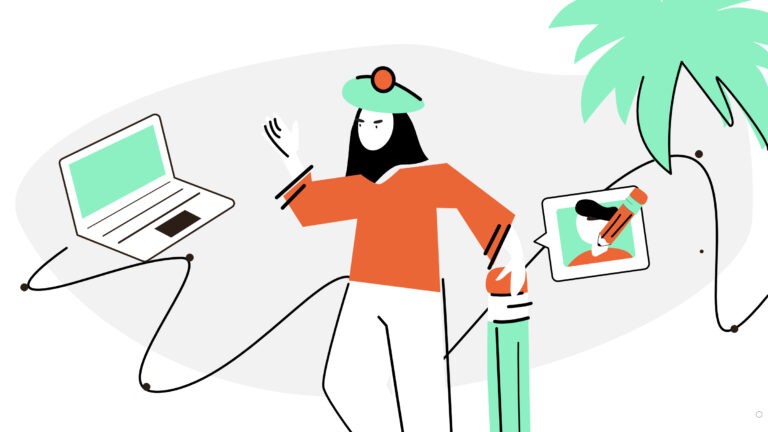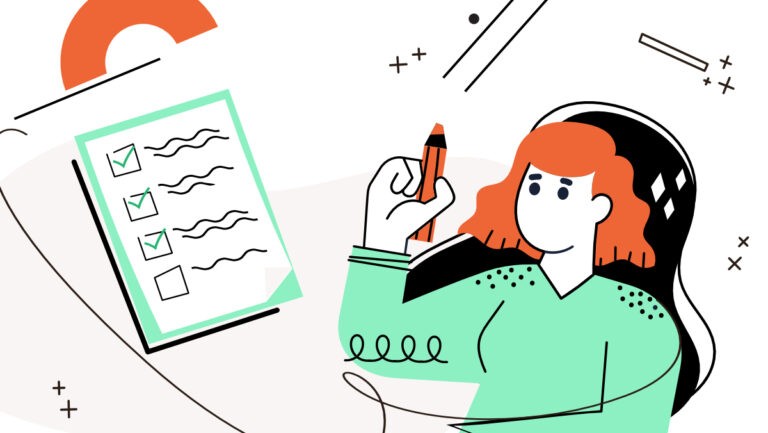As creative individuals, designers are highly prone to self-doubt. Working with and as designers for years, we know that most of us experience imposter syndrome at some point. Following the trend to raise the topic and educate on psychological issues, we’re here to point at the reason you may have imposter syndrome and give some tips on how to overcome it.
What is imposter syndrome?
Imposter syndrome, simply put, is a constant doubting your abilities, to the point of belittling your achievements. The imposter syndrome often manifests itself in the feeling of not being worthy of what you have. You may feel like everything you earned is thanks to luck.
Why does imposter syndrome occur?
If to talk about the design industry, in particular, imposter syndrome can be created by the constant race for new skills, technologies, apps, trends, etc. Designers have a never-ending list of things to learn, no matter how much experience they have. This point of professionalism seems so distant, that it makes designers doubt their abilities on the regular basis.
Another reason is the comparison-culture and overexposure in social media. It especially concerns designers-Millennials. For their whole lives, they have been compared to others, they see other people’s success on social media – it’s only natural their self-esteem is not especially good.
What makes things worse is the fact that it’s not common to discuss psychological issues publicly. Though thankfully, it’s getting more okay to do so now, in some communities it’s a taboo. Feeling isolated and full of self-doubt, designers with imposter syndrome don’t even have a chance to learn that it’s not only them. In fact, scientists state that over 70% of the whole population experiences imposter syndrome at some point in their lives.
What are the types of imposter syndrome?
There are a few types of imposter syndrome: which one do you suffer from?
The perfectionist
Perfectionists know exactly what results they want to achieve. If they achieve only 99%, they consider it to be a failure. The perfectionists often end up in a cycle of doing their best, which is never good enough.
The superperson
While perfectionists are mostly focused on the result of their work, superpeople are driven by the process of it. They often become workaholics, that push themselves to the limit and don’t even consider having a break.
The natural genius
Natural geniuses are people who didn’t have to put effort into things – the ones that were smart and didn’t have to study hard to get good grades. The imposter syndrome reveals itself when there is a challenge to overcome, or when something is not mastered on the first try. Such people are prone to ditch the thing they cannot get right from the get-go, without pushing it.
The rugged individualist
Individualists are people who believe that asking for help is a sign of weakness. They push themselves to the limit by trying to accomplish everything alone.
The expert
Experts believe that they should be knowledgeable about everything. They feel incompetent even if they don’t know the answer to one question they get asked. It is also sometimes hard for them to get employed: they absolutely need to fit every requirement in the job description, otherwise they won’t even submit a resume.
How to overcome imposter syndrome if you’re a graphic designer/brand designer?
- Realize you’re not alone in this.
Once you realize that many people around you – co-workers, family, friends – also suffer from the imposter syndrome, you won’t feel alone and alienated. Try talking about the way you feel to your trusted one, and let them boost your confidence a bit. Believe them when they tell you you’re worthy.
- Learn how to differentiate facts from impressions.
If you’re being doubtful about your own achievements, try to write down facts and your impressions. For example, impression – I only got hired out of luck, fact – I’ve been working in this place for a year, and I always get praised for my creative thinking. By doing so, you will get out of your doubt bubble, and see things the way they really are.
- Realize no one is perfect, accentuate on the positive things.
Take a look at your role models or people you believe to be successful. They all make mistakes, and you don’t take notice of them too much. Then, why are you so critical of your mistakes? Try to single out every little thing you do right, and praise yourself for it. If you do make a mistake, focus on fixing it, and not on a standalone fact of making it.
- Find a mentor.
A mentor is an exquisite opportunity to have an outside view of your work. If you are doubtful of the work you perform, find a bit more experienced graphic designer to look at your designs. We guarantee that constructive criticism helps both with self-confidence, and getting better at the skill. At last, criticism is not always negative.
- Teach someone.
Don’t think you’re good enough at free-hand drawing? Or vectors? Or color theory? Go teach someone about it. Make a video, write an article, or simply answer a question on Quora.
The outcome: a) you might realize that you know a lot more than you thought you did; b) if you do know less than enough, you will learn it while preparing for the video/article/answer.
- Define weak points.
Last but not least, transform your weak points into stronger ones. Define what you’re especially not confident about, and work on that time and time again. With practice, you will definitely get better, and gain confidence in your abilities in the process.
Manage your workflow better, with Gingersauce
Gingersauce is a professional tool for creating brand books allowing you to cut off the technicalities, and focus on the creative part of being a designer. Use it to create brand books, a powerful presentation for your visual, or even a guiding tool to learn about the brand identity creation steps. It’s up to you!



